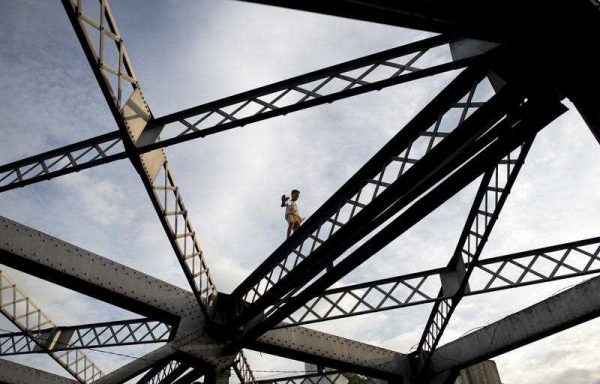The economy has been performing creditably. GDP grew at an average of 5.9 per cent over the last three years amid a lingering global economic slowdown and natural disasters. The economy has outperformed most ASEAN countries in the past few years and will be a major player in the envisaged ASEAN Economic Community (AEC). However, the official growth target of 6.5–7.5 per cent for 2014 has been revised downward to 6–7 per cent following government underspending, weak performance of agriculture and the impact of natural disasters. The ADB has also lowered its GDP forecast to 6 per cent.
The government expects a rebound to a 7–8 per cent growth rate in 2015, which is expected to be maintained until the end of the current administration’s term in 2016. This bold forecast seems based on strong fundamentals: a stable macroeconomic framework (a regime of low inflation and larger fiscal space), continued rise in remittances from Filipino workers overseas (around US$23 billion in 2013), a resurgent manufacturing sector and well-performing service sector, a consistent build-up of foreign exchange reserves (currently at US$79.8 billion) and credit rating upgrades from international credit rating agencies.
Yet there are some potential troubles — external and internal — looming on the horizon that could, if not properly managed, spoil this impressive performance and dampen future growth prospects. The economy is becoming more integrated into the global and regional economies, so weaknesses in major trading partners will impact on domestic growth prospects. Trade is largest with East Asia (51 per cent of total value exports and 39 per cent of total value of imports) and ASEAN (16 and 22 per cent of exports and imports respectively).
But last year, Japan could not seem to find the formula for reigniting growth while the powerhouse Chinese economy showed signs of slowing. The proposed AEC offers prospects of a large trading and investment market, but it has yet to be established. ASEAN is an important cog in East Asian trade and investment, but is also affected by weaknesses in East Asian economies. The European Union and the US also continue to be important trading partners. But while the US shows signs of (albeit weak) recovery, the Eurozone continues to falter.
Given these headwinds, Philippine policymaking has to be nimble, astute and efficient to take advantage of emerging opportunities in a very dynamic region. The government should spend its remaining political capital on pursuing difficult reforms — covering trade facilitation, competition policy and regulatory frameworks. It should focus on creating a competitive business environment and bringing down the cost of doing business. Previous reforms have paid off: the country’s ranking has risen in various indicators (on competitiveness and reduced cost of doing business) but stronger action is needed to really make the Philippines a preferred investment destination.
An important internal factor is the issue of who succeeds the current president, who will end his term of office in the middle of 2016. The Constitution bars an incumbent president from seeking re-election. The market has responded favourably to President Aquino’s drive for transparency, elimination of corruption and good governance. Will the same (if not stronger) commitment to good governance, policy and regulatory frameworks be assured by the succeeding administration? The challenge for voters is select a leader who will not flinch at difficult reforms.
There will be plenty of populist contenders in the political sphere who could put political expediency over difficult policy and institutional reforms. This poses a danger to the economy because Philippine politics is personalised and opportunistic. Voters vote not on issues but rather on the personal qualities and promises made by political entrepreneurs. The electorate, the majority of whom are poor and less educated, is vigilant but it needs to be better informed and educated if it is to hold governments to account.
Fortunately, the taste of growth driven by reforms in governance and policy has aroused an appetite for broadly-shared prosperity and has engendered a growing support for more policy reforms. A rising middle class empowered by continuing cash remittances and returning overseas Filipino workers (who have experienced living in functioning societies abroad) could constitute the swing vote for a leader with the best interest of the country in mind. We can only hope.
Gilberto M. Llanto is President of the Philippine Institute for Development Studies.


This is great news for us Filipinos. I believe that with a little push (And the right person to be elected as president next year), our country can double the percentage of our economic growth (If we are persevering enough, that is).